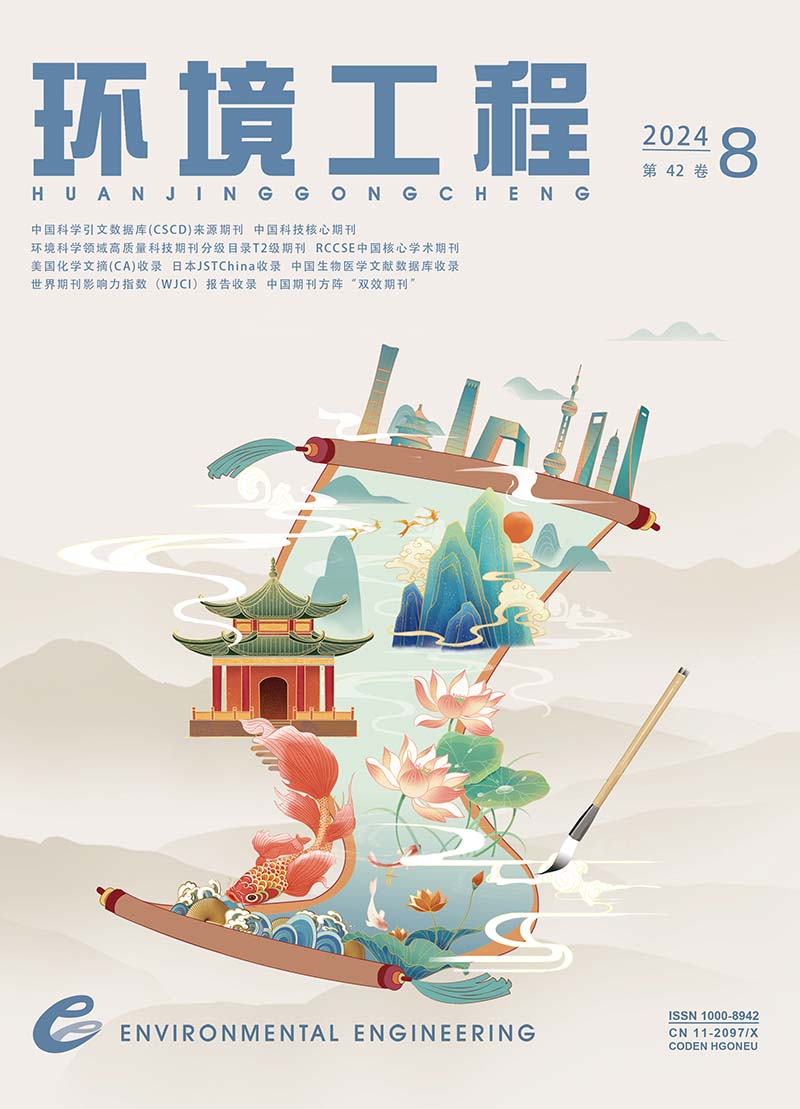| [1] |
生态环境部. 土壤环境质量 建设用地土壤污染风险管控标准:GB 36600—2018[S]. 北京: 生态环境部, 2018.
|
| [2] |
United States Environmental Protection Agency (US EPA). Soil Screening Guidance: Technical Background Document (EPA/540/R95/128)[R]. Washington DC: US Environmental Protection Agency, 1996.
|
| [3] |
United States Environmental Protection Agency (US EPA). Supplemental Guidance for Developing Soil Screening Levels for Superfund Sites (OSWER 9355.4-24)[R]. Washington DC: US Environmental Protection Agency, 2002.
|
| [4] |
American Society for Testing of Materials (ASTM). Standard Guide for Risk-based Corrective Action Applied at Petroleum Release Sites (E1739-95)[R]. Conshohocken: American Society for Testing of Materials, 1995.
|
| [5] |
American Society for Testing of Materials (ASTM). Standard Guide for Risk-based Corrective Action (E2081-00)[R]. Conshohocken: American Society for Testing of Materials, 2000.
|
| [6] |
Department for Environment, Food and Rural Affairs and Environment Agency (DEFRA and EA). The Contaminated Land Exposure Assessment Model (CLEA): Technical Basis and Algorithms[R]. Bristol: Department for Environment, Food and Rural Affairs and Environment Agency, 2002.
|
| [7] |
Environment Agency (EA). Updated Technical Background to the CLEA Model (SC050021/R3)[R]. Bristol: Environment Agency, 2009.
|
| [8] |
Contaminated Land: Applications in Real Environments (CL: AIRE). SP1010-Development of Category 4 Screening Levels for Assessment of Land Affected by Contamination[R]. London: Contaminated Land: Applications in Real Environments, 2014.
|
| [9] |
Ministry of Housing, Spatial Planning and the Environment (VROM). Circular on Target Values and Intervention Values for Soil Remediation[R]. Amsterdam: Ministry of Housing, Spatial Planning and the Environment, 2000.
|
| [10] |
Canadian Council of Ministers of the Environment (CCME). Interim Canadian Environmental Quality Criteria for Contaminated Sites[R]. Winnipeg: Canadian Council of Ministers of the Environment, 1991.
|
| [11] |
Canadian Council of Ministers of the Environment (CCME). A Protocol for Deriving Environmental and Human Health Soil Quality Guidelines[R]. Winnipeg: Canadian Council of Ministers of the Environment, 1996.
|
| [12] |
Canadian Council of Ministers of the Environment (CCME). A Protocol for the Derivation of Environmental and Human Health Soil Quality Guidelines[R]. Winnipeg: Canadian Council of Ministers of the Environment, 2006.
|
| [13] |
北京市质量技术监督局. 建设用地土壤环境风险评价筛选值: DB11/T 811—2011[S]. 北京: 北京市质量技术监督局, 2011.
|
| [14] |
上海市环境保护局. 上海市建设用地土壤环境健康风险评估筛选值[S]. 上海: 上海市环境保护局, 2015.
|
| [15] |
重庆市质量技术监督局. 场地土壤环境风险评估筛选值: DB50/T 723—2016[S]. 重庆: 重庆市质量技术监督局, 2016.
|
| [16] |
深圳市市场监督管理局. 建设用地土壤污染风险筛选值和管制值: DB4403/T 67—2020[S]. 深圳: 深圳市市场监督管理局, 2020.
|
| [17] |
江西省市场监督管理局. 建设用地土壤污染风险管控标准(试行): DB36/1282—2020[S]. 南昌: 江西省市场监督管理局, 2020.
|
| [18] |
广西壮族自治区市场监督管理局. 建设用地土壤污染风险筛选值和管制值: DB45/T 2556—2022[S]. 南宁: 广西壮族自治区市场监督管理局, 2022.
|
| [19] |
河北省市场监督管理局. 建设用地土壤污染风险筛选值: DB13/T 5216—2022[S]. 石家庄: 河北省市场监督管理局, 2022.
|
| [20] |
四川省市场监督管理局. 四川省建设用地土壤污染风险管控标准: DB51/2978—2023[S]. 成都: 四川省市场监督管理局, 2023.
|
| [21] |
宋静, 陈梦舫, 骆永明, 等. 制订我国污染场地土壤风险筛选值的几点建议[J]. 环境监测管理与技术, 2011,23(3):26-33.
|
| [22] |
张斌, 邹卉, 肖杰, 等. RAG-C和RBCA模型中场地特征参数的差异及其启示[J]. 环境工程, 2015,33(9):130-133
,99.
|
| [23] |
骆永明, 夏家淇, 章海波, 等.中国土壤环境质量基准与标准制定的理论和方法[M]. 北京: 科学出版社, 2015.
|
| [24] |
陈梦舫, 韩璐, 罗飞. 污染场地土壤与地下水风险评估方法学[M]. 北京: 科学出版社, 2017.
|
| [25] |
陈梦舫, 韩璐, 罗飞. 污染场地土壤与地下水精细化风险评估理论与实践[M]. 北京: 科学出版社, 2022.
|
| [26] |
赵彬, 彭天玥, 张昊, 等. 汞污染场地特征识别与健康风险研究[J]. 环境工程, 2023,41(4):205-212.
|
| [27] |
生态环境部. 建设用地土壤污染风险评估技术导则: HJ 25.3—2019[S]. 北京: 生态环境部, 2019.
|
| [28] |
生态环境部. 土壤环境质量 建设用地土壤污染风险管控标准(试行)(征求意见稿)编制说明[R]. 北京: 生态环境部, 2018.
|
| [29] |
United States Environmental Protection Agency (US EPA). Integrated Risk Information System (IRIS)[EB/OL]. http://www.epa.gov/IRIS/. 2019-5-21.
|
| [30] |
United States Environmental Protection Agency (US EPA). Regional Screening Levels for Chemical Contaminants at Superfund Sites[EB/OL]. https://www.epa.gov/risk/regional-screening-levels-rsls. 2019-5-21.
|
| [31] |
Texas Commission on Environmental Quality (TCEQ). Texas Risk Reduction Program: Protective Concentration Levels[EB/OL]. http://www.tceq.texas.gov/remediation/trrp/trrppcls.html. 2018-4-18.
|
| [32] |
陈梦舫, 罗飞, 韩璐, 等. 污染场地健康与环境风险评估软件(HERA, Version 1.1)[CP]. 南京: 中国科学院南京土壤研究所, 2014.
|
| [33] |
香港环境保护署. 按风险厘定的土地污染整治标准的使用指引[S]. 香港: 香港环境保护署, 2007.
|
| [34] |
住房和城乡建设部. 城市用地分类与规划建设用地标准: GB 50137—2011[S]. 北京: 住房和城乡建设部, 2011.
|
| [35] |
深圳市人民政府. 深圳市城市规划标准与准则[S]. 深圳: 深圳市人民政府, 2013.
|
| [36] |
周友亚, 颜增光, 周光辉, 等. 制定场地土壤风险评价筛选值中关注污染物的预筛选方法[J]. 环境工程技术学报, 2011,1(3):264-269.
|
| [37] |
杨龙, 孙长虹, 李珊珊, 等. 典型行业环境地表灰尘重金属污染比较研究[J]. 环境工程, 2015,33(2):122-125.
|
| [38] |
刘臣辉, 付玲玲, 申雨桐, 等. 欧盟水框架指令优先污染物筛选方法的应用[J]. 环境工程, 2015,33(10):126-129.
|
| [39] |
深圳市人居环境委员会. 深圳市建设用地土壤环境调查评估工作指引(试行)[S]. 深圳: 深圳市人居环境委员会, 2018.
|
| [40] |
罗飞, 宋静, 潘云雨, 等. 典型滴滴涕废弃生产场地污染土壤的人体健康风险评估研究[J]. 土壤学报, 2012,49(1):26-35.
|


 Login
Login Register
Register E-alert
E-alert






 DownLoad:
DownLoad: